Tim Sawyer - Chess Strategy Englund 1.d4 e5: How to Beat Intermediate Chess Players (Sawyer Chess Strategy Book 18)
Here you can read online Tim Sawyer - Chess Strategy Englund 1.d4 e5: How to Beat Intermediate Chess Players (Sawyer Chess Strategy Book 18) full text of the book (entire story) in english for free. Download pdf and epub, get meaning, cover and reviews about this ebook. year: 2022, genre: Home and family. Description of the work, (preface) as well as reviews are available. Best literature library LitArk.com created for fans of good reading and offers a wide selection of genres:
Romance novel
Science fiction
Adventure
Detective
Science
History
Home and family
Prose
Art
Politics
Computer
Non-fiction
Religion
Business
Children
Humor
Choose a favorite category and find really read worthwhile books. Enjoy immersion in the world of imagination, feel the emotions of the characters or learn something new for yourself, make an fascinating discovery.
- Book:Chess Strategy Englund 1.d4 e5: How to Beat Intermediate Chess Players (Sawyer Chess Strategy Book 18)
- Author:
- Genre:
- Year:2022
- Rating:4 / 5
- Favourites:Add to favourites
- Your mark:
Chess Strategy Englund 1.d4 e5: How to Beat Intermediate Chess Players (Sawyer Chess Strategy Book 18): summary, description and annotation
We offer to read an annotation, description, summary or preface (depends on what the author of the book "Chess Strategy Englund 1.d4 e5: How to Beat Intermediate Chess Players (Sawyer Chess Strategy Book 18)" wrote himself). If you haven't found the necessary information about the book — write in the comments, we will try to find it.
This is fun chess, not serious chess, although some good players have used this gambit many times. The opening is named after the Swedish player Fritz Carl Anton Englund. Henri Grob and Stefan Buecker both played it quite a bit. Lev Zilbermints has a line named after him.
Englund Gambit is sort of like a Blackmar-Diemer Gambit reversed with a tempo behind. Back when Tim Sawyer played 1.d4 e5 in tournaments, chess engines were rated below 2000. Later the author stopped playing it in rated games, but he still plays it sometimes for fun.
The author illustrates chess strategy from games vs random players as Guests on chess.com. The book has 32 games with 103 diagrams. Tim won 20 as Black and 12 as White in 32 ten-minute unrated blitz games. Opening theory and endgame knowledge help your play, but tactics win most games.
The author uses strategy for many comments to explain whats going on. He follows any of these steps. 1. Describe the current position. 2. Imagine how to improve it. 3. Plan how to get there.
Tim picks a key position every few moves to make a comment. His plan is for you to browse through the book, look at the diagrams and read the comments with ease.
For those who prefer to read quickly, you can skim through the book from diagram to diagram. Note the change from the previous diagram and read any notes that interest you.
Sometimes a line of chess engine analysis is added. You may wish to work out those lines in your head, or just note that there was an alternative way to play and keep reading.
Tim Sawyer played chess for 50 years. As a Postal Chess Master, his usual opponents were rated 1800 to 2400. However, opponents in this book are often lower to intermediate. Tims peak Internet Chess Club blitz rating was 2492.
The author assumes that you can read algebraic chess notation. The diagrams have White at the bottom of the board. Thank you for reading. Enjoy this one!
Tim Sawyer: author's other books
Who wrote Chess Strategy Englund 1.d4 e5: How to Beat Intermediate Chess Players (Sawyer Chess Strategy Book 18)? Find out the surname, the name of the author of the book and a list of all author's works by series.

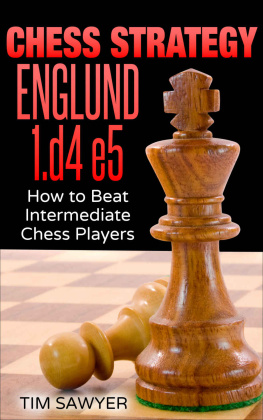
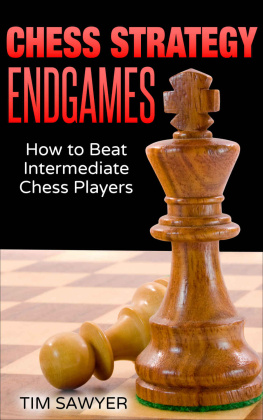
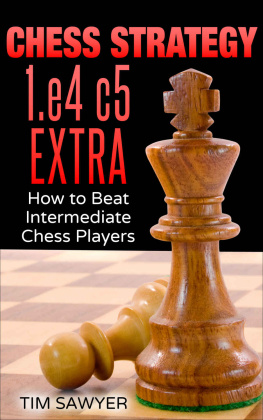

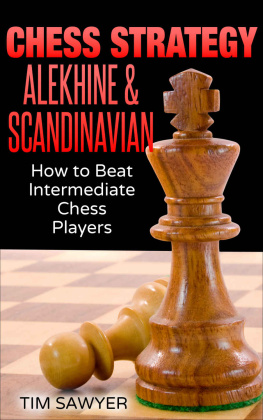
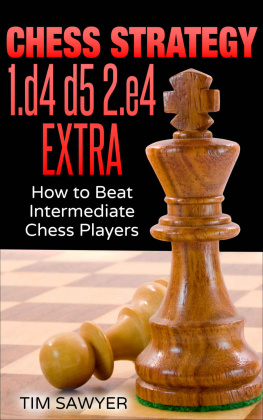
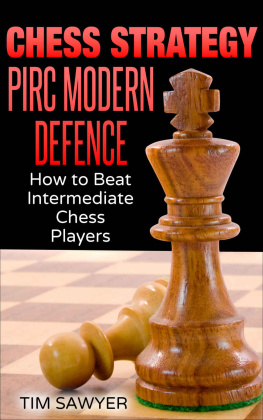
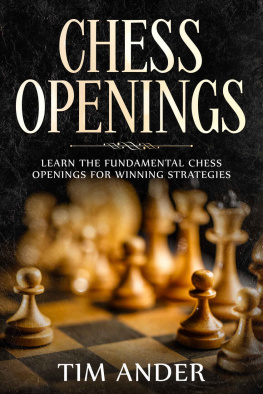

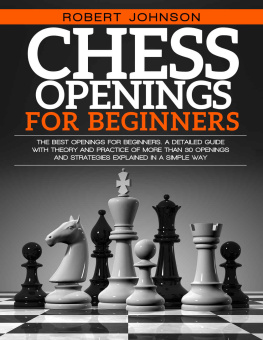
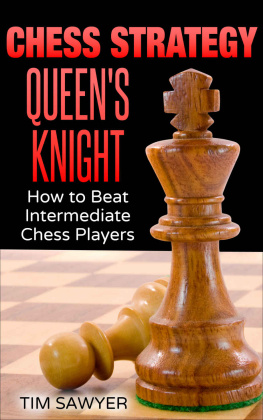
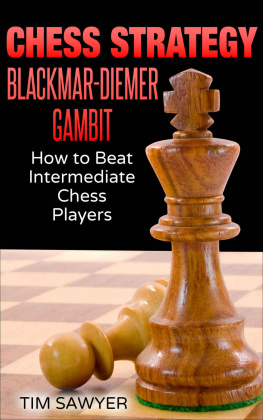
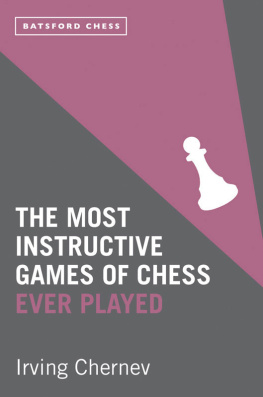
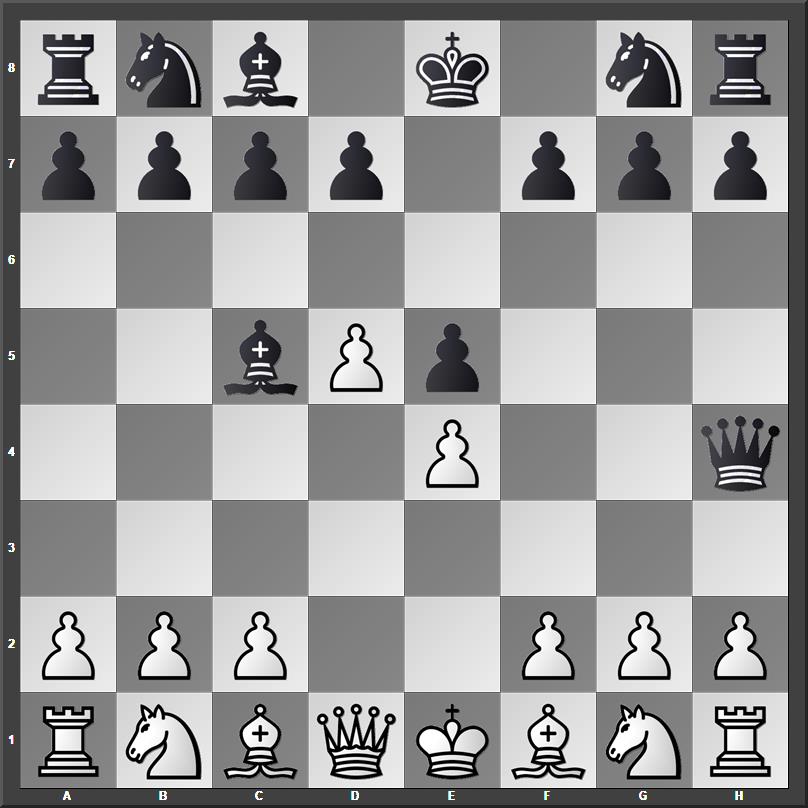 3.e4 Qh4 Now 4.Qf3 or 4.Qe2 with equality. Instead, Black blunders.
3.e4 Qh4 Now 4.Qf3 or 4.Qe2 with equality. Instead, Black blunders.  Now a safe continuation is 4.Nd4 Nf6 5.c4 d6. 4.Ne5 d6 5.Nc4 f5 6.e3 Nf6 7.Nc3 00 8.Na4 a6 9.Nxc5 dxc5
Now a safe continuation is 4.Nd4 Nf6 5.c4 d6. 4.Ne5 d6 5.Nc4 f5 6.e3 Nf6 7.Nc3 00 8.Na4 a6 9.Nxc5 dxc5 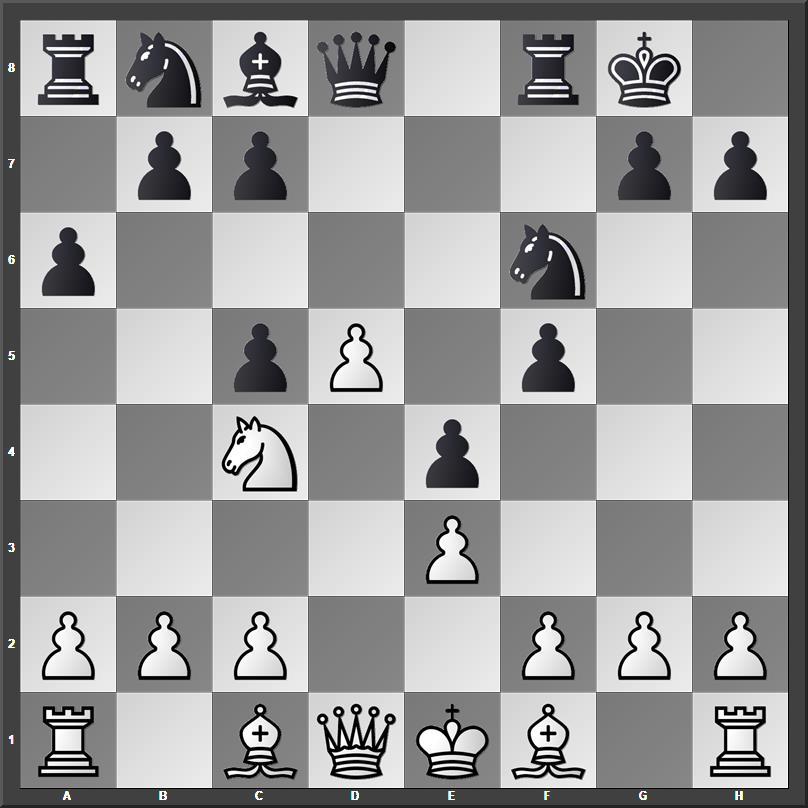 10.Na5 Nxd5 11.Bc4 c6 12.Bd2 b5 13.Be2 c4 The knight on a5 is trapped. 4.Ne5 d6 5.Nc4 f5 6.e3 Nf6 7.Nc3 00 8.Na4 a6 9.Nxc5 dxc5
10.Na5 Nxd5 11.Bc4 c6 12.Bd2 b5 13.Be2 c4 The knight on a5 is trapped. 4.Ne5 d6 5.Nc4 f5 6.e3 Nf6 7.Nc3 00 8.Na4 a6 9.Nxc5 dxc5 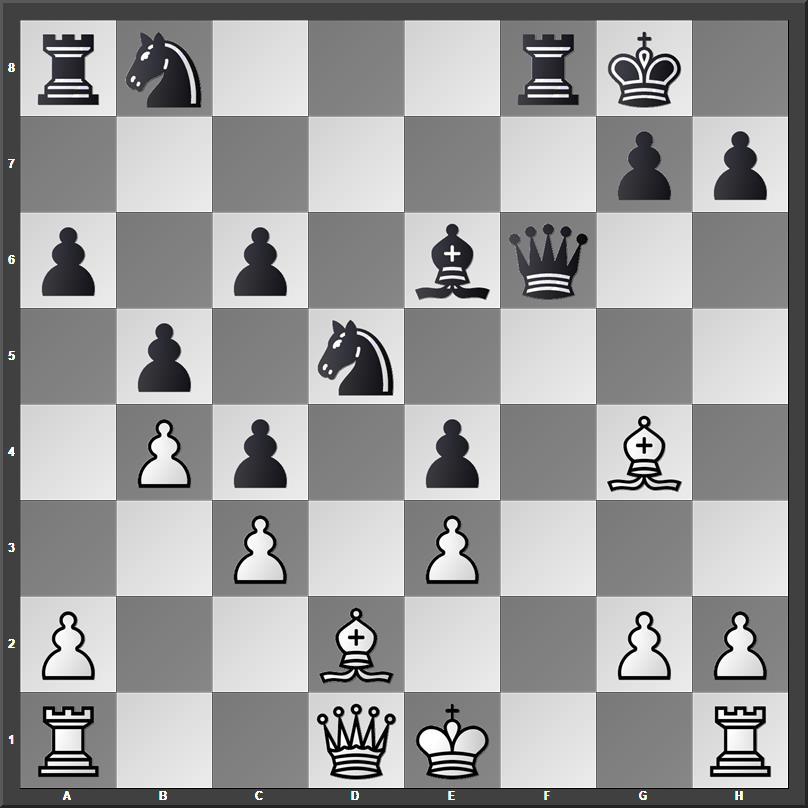 19.Rf1 Qxf1# 01 White is checkmated
19.Rf1 Qxf1# 01 White is checkmated Black gains time attacking White's queen. 5.b4 Nf6 6.Qf5 Nxb4 Also good for Black is 6...d5. 7.Ba3 d5
Black gains time attacking White's queen. 5.b4 Nf6 6.Qf5 Nxb4 Also good for Black is 6...d5. 7.Ba3 d5 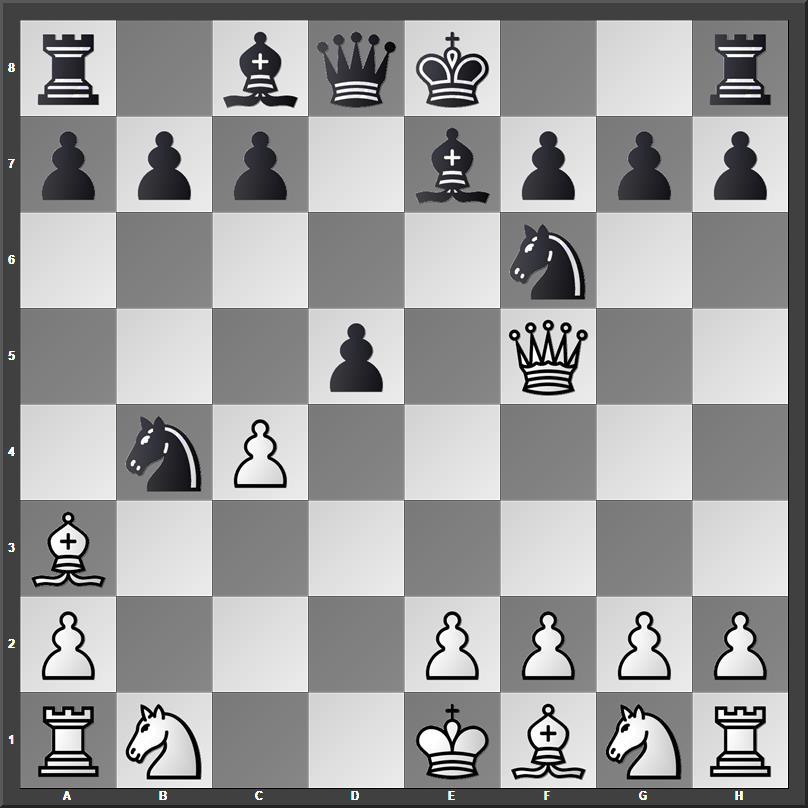 8.Qe5 Nc2+ White loses material to a knight fork check. 9.Kd1 Nxa1 Even stronger is 9...Nxa3 10.Nxa3 Ng4. 10.Bxe7 Qxe7 11.Qxa1 dxc4 12.e4
8.Qe5 Nc2+ White loses material to a knight fork check. 9.Kd1 Nxa1 Even stronger is 9...Nxa3 10.Nxa3 Ng4. 10.Bxe7 Qxe7 11.Qxa1 dxc4 12.e4  12Qxe4 Or 12...Nxe4 13.Qxg7 Nxf2+ 14.Kd2 Rf8 and Black wins. 13.Nd2 Qe7 14.Nxc4 00 15.Nh3 Re8 16.Be2 Qxe2+ 17.Kc1 Qxc4+ 18.Kd1 Bg4+
12Qxe4 Or 12...Nxe4 13.Qxg7 Nxf2+ 14.Kd2 Rf8 and Black wins. 13.Nd2 Qe7 14.Nxc4 00 15.Nh3 Re8 16.Be2 Qxe2+ 17.Kc1 Qxc4+ 18.Kd1 Bg4+ 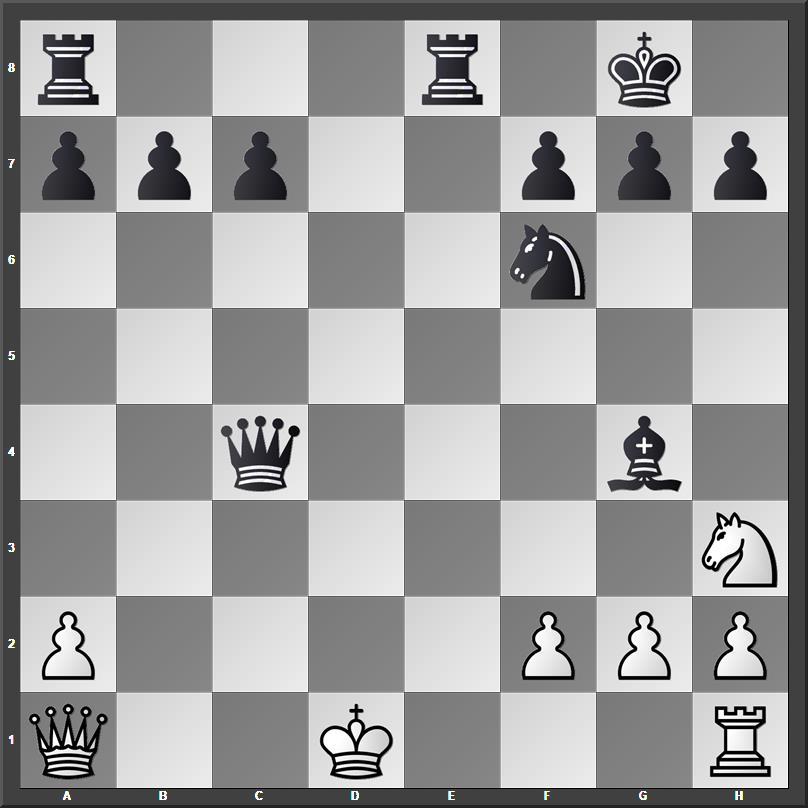 19.f3 Rad8+ 20.Qd4 Rxd4# 01 White is checkmated
19.f3 Rad8+ 20.Qd4 Rxd4# 01 White is checkmated 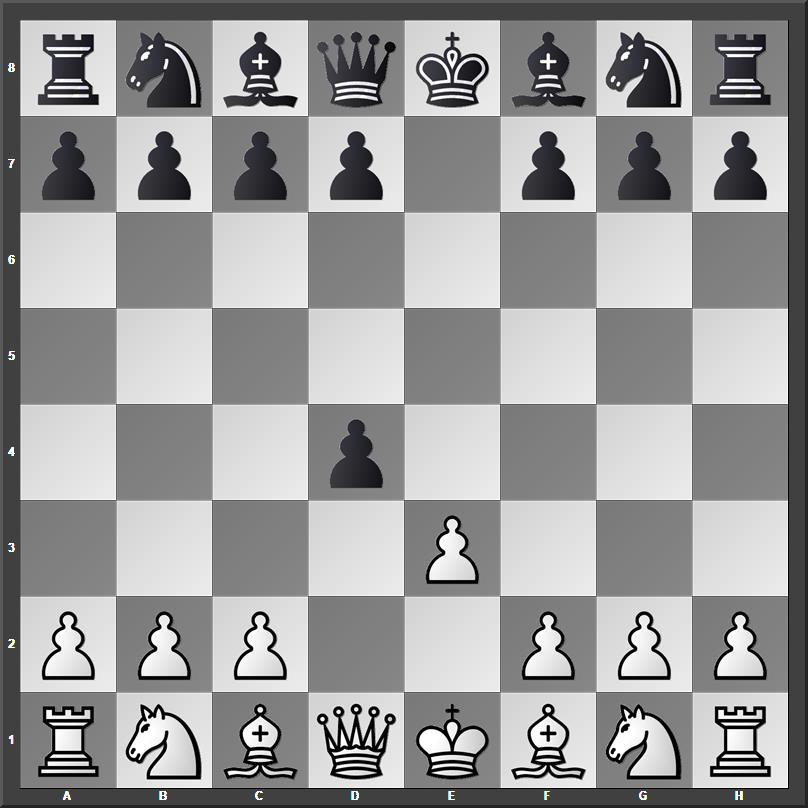 3.c3 Better is 3.exd4 d5 French Defence Exchange Variation. 3...dxe3 4.Bxe3 d5 5.Na3 c6 6.Bd3 Nf6 7.f3 Be7 8.Ne2 00 9.00 Re8 10.Bf2 Bd6 11.Qc2 Nbd7 12.Ng3 g6
3.c3 Better is 3.exd4 d5 French Defence Exchange Variation. 3...dxe3 4.Bxe3 d5 5.Na3 c6 6.Bd3 Nf6 7.f3 Be7 8.Ne2 00 9.00 Re8 10.Bf2 Bd6 11.Qc2 Nbd7 12.Ng3 g6  Black's g6 pawn discourages Nh5 or Nf5. 13.Rae1 Rxe1 14.Rxe1 Bc5 15.Bxc5 Nxc5 After losing a pawn on move 3, White has played well. 16.Nb1 Nxd3 17.Qxd3 Be6 18.Nd2 b6
Black's g6 pawn discourages Nh5 or Nf5. 13.Rae1 Rxe1 14.Rxe1 Bc5 15.Bxc5 Nxc5 After losing a pawn on move 3, White has played well. 16.Nb1 Nxd3 17.Qxd3 Be6 18.Nd2 b6 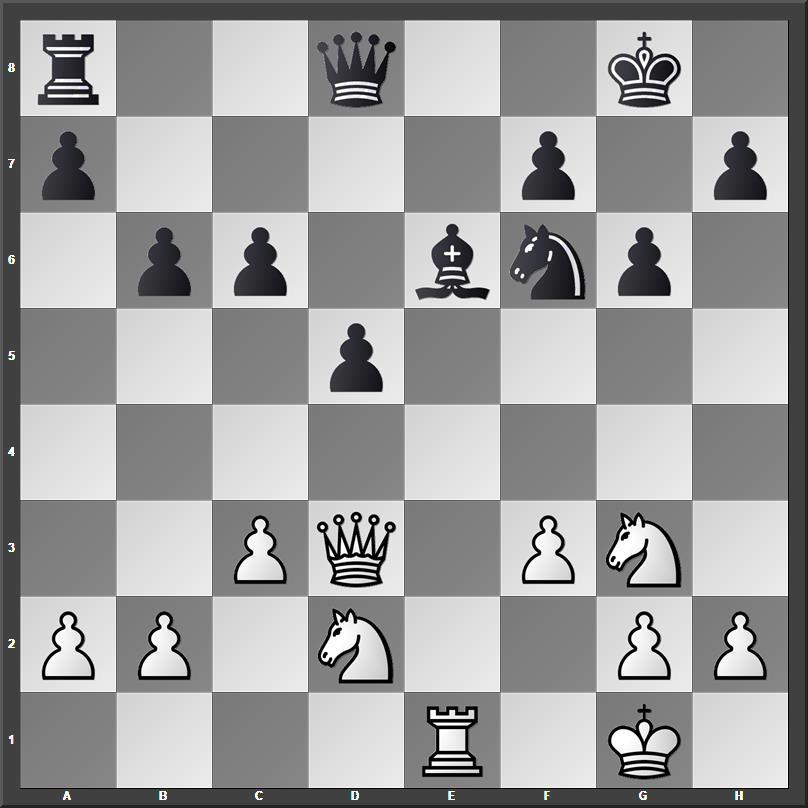 19.Qe3 If 19.f4 Qd6 20.f5 Bd7 21.fxg6 hxg6 Black stands better. 19...Kg7 20.Ne2 Bd7 21.Qg5 h6
19.Qe3 If 19.f4 Qd6 20.f5 Bd7 21.fxg6 hxg6 Black stands better. 19...Kg7 20.Ne2 Bd7 21.Qg5 h6 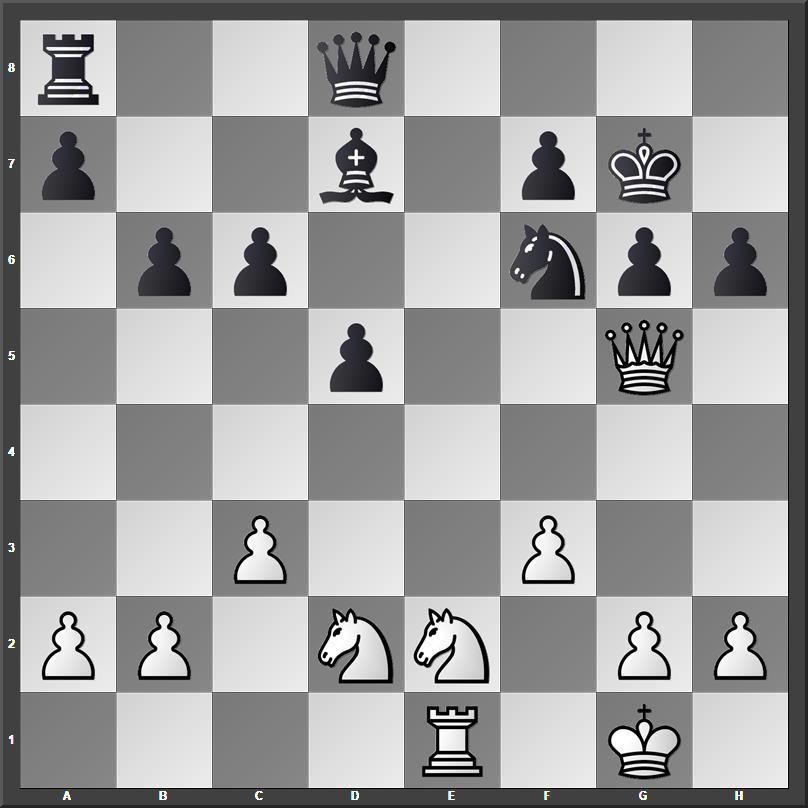 White should retreat the queen but fails to see my h- pawn. 22.f4 hxg5 23.fxg5 Ne4 Black plays to trade pieces when ahead in material. 24.Nxe4 dxe4 Black is ahead by a full queen. 25.Nf4 Qxg5 26.g3 Qc5+ 27.Kg2 Re8 01
White should retreat the queen but fails to see my h- pawn. 22.f4 hxg5 23.fxg5 Ne4 Black plays to trade pieces when ahead in material. 24.Nxe4 dxe4 Black is ahead by a full queen. 25.Nf4 Qxg5 26.g3 Qc5+ 27.Kg2 Re8 01 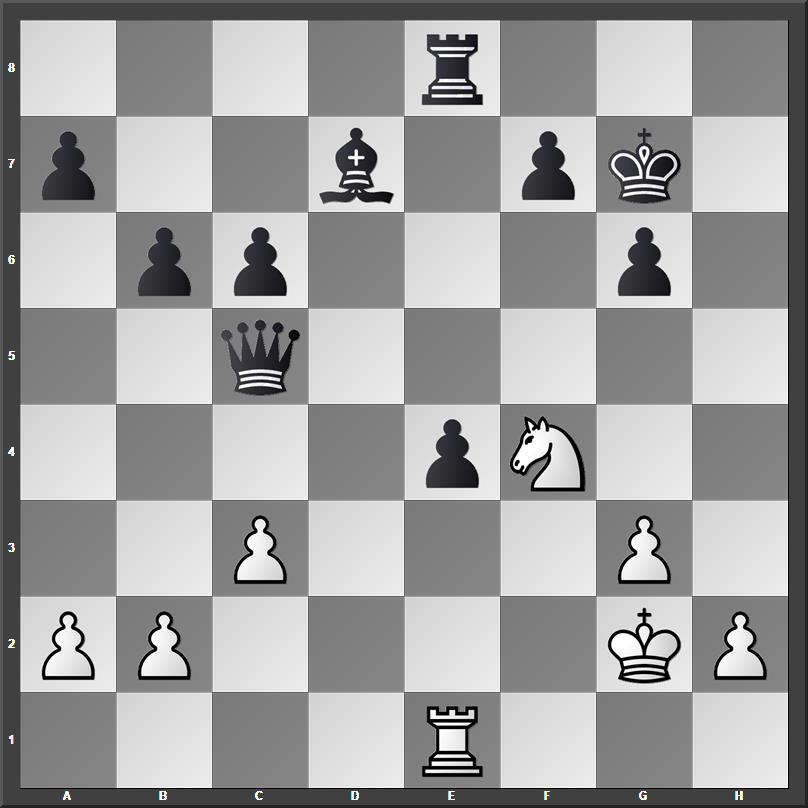 My opponent has had enough. 25.Nf4 Qxg5 26.g3 Qc5+ 27.Kg2 Re8 01
My opponent has had enough. 25.Nf4 Qxg5 26.g3 Qc5+ 27.Kg2 Re8 01